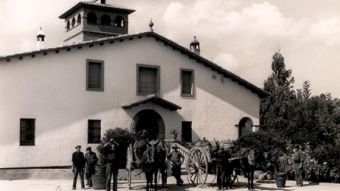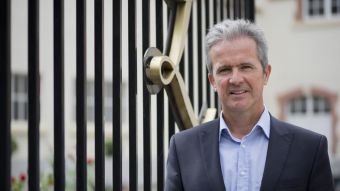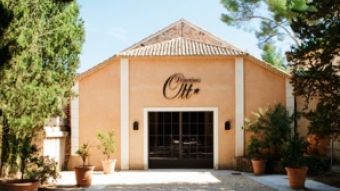From France with love. Terra Remota
This is the first in a new series of articles on wine companies founded in Spain by foreign companies or individuals since the end of the twentieth century. The series is a tribute to all those who believe in the great diversity and potential of our Spanish grapes, climate, and people. Wine knows no borders…
Terra Remota isn’t remote due to the fact that its owners, Marc and Emma Bournazeau, are a French couple living and working between Toulouse and Perpignan. They are actually closer to Terra Remota than the vast majority of Spaniards. For us, Terra Remota might be considered remote because it is located almost on the border with France. This area, lying very close to La Junquera, virtually in the Roussillon, has, along with Cerdaña, played an important role in the history of Spain, since the "remote" times of the Arabs, Franks, Carolingians, Visigoths, and the kings of Aragon and Castile.
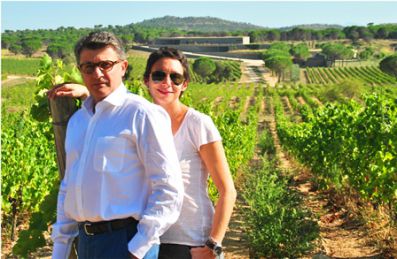 Marc & Emma Emma is the daughter of Claude Florensa whose father was a republican from Lleida who, like many others, fled to France at the end of the Spanish Civil War. Claude had been born in France to a French mother. In 1999, he acquired around 40 hectares of Mediterranean woodland across the Spanish border thereby fulfilling his dream of returning to the land of his father. These were located in a captivating and solitary spot that appears to be far removed from the rest of the world, but is, in fact, only 15 kilometres from the Mediterranean Sea, the bustling Costa Brava with Rosas, Cadaqués and the famous El Bulli restaurant. It lies between the villages of Capmany and Sant Climent Sescebes, in the province of Girona, in the Alt Empordà, a beautiful, peaceful region with a unique landscape, architecture and way of life. It is also an intimate and personal land with a great gastronomic culture that values the art of doing things well, without fuss or frills.
Marc & Emma Emma is the daughter of Claude Florensa whose father was a republican from Lleida who, like many others, fled to France at the end of the Spanish Civil War. Claude had been born in France to a French mother. In 1999, he acquired around 40 hectares of Mediterranean woodland across the Spanish border thereby fulfilling his dream of returning to the land of his father. These were located in a captivating and solitary spot that appears to be far removed from the rest of the world, but is, in fact, only 15 kilometres from the Mediterranean Sea, the bustling Costa Brava with Rosas, Cadaqués and the famous El Bulli restaurant. It lies between the villages of Capmany and Sant Climent Sescebes, in the province of Girona, in the Alt Empordà, a beautiful, peaceful region with a unique landscape, architecture and way of life. It is also an intimate and personal land with a great gastronomic culture that values the art of doing things well, without fuss or frills.
Claude had sensed the potential of this land that his daughter, Emma, and her husband, Marc, were able to fulfil some years later. Sadly, Claude died a few years after acquiring the "remote" land but his legacy was in safe hands. Marc, a notary working in Toulouse, gave up the security of “documents and deeds” for the unpredictability of grape harvesting and fermentation where, with all its ups and its downs, you can never “bear witness” to anything until it has actually happened.
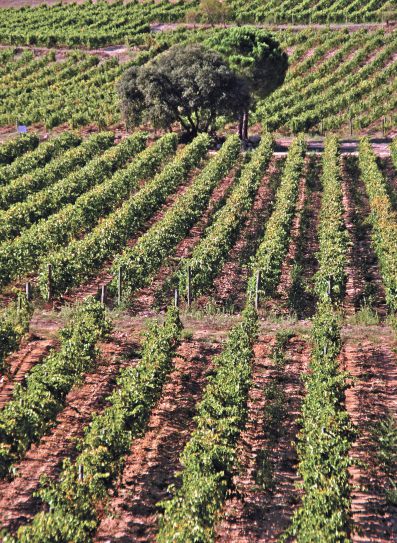
When the estate was acquired, there was scarcely any trace of the old vines. There were patches of land and woods with an abundance of oaks, cork trees, gall oaks, pines, olive trees, tangled blackberry bushes, lavender, thyme... a Mediterranean woodland in the true sense of the word. They cleared some hectares to plant vines with the aim of producing quality wines. They planted the vines in plots with a density of 4,600-4,800 vines per hectare, which is higher than usual for the area (the average in the Empordà D.O. is 3,600). The yield is very low, around one kilo of grapes per vine. They ended up with 27 hectares of vineyards in plots occupying gentle hills, all planted in a north-south facing position and surrounded by a native woodland that undoubtedly transmits its Mediterranean aromas to the grapes. Their picture-perfect Garnacha Negra, Garnacha Blanca, Syrah, Chardonnay, Tempranillo and Chenin Blanc varieties are all organically grown. In each of the plots or " clos" there is a neat wooden sign proudly displaying the name of someone who has been important to the business. Of course, there is one dedicated to Nono, as he was affectionately called, who used to work alongside Emma's father, Claude.
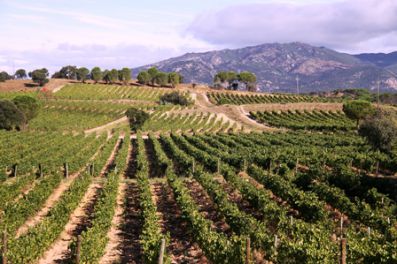
THE ROAD IS MADE BY WALKING
Another example of the fine sensibility of this French couple was their choice of names for the wines that are the focal point of their production. Because of their love for the great Spanish poet, Antonio Machado, and due to the proximity of their home town, Perpignan, to Colliure, the French town where the poet died and is buried, they chose the name Camino (path or road) for their biggest volume wine. Camino is taken from a line in Machado’s celebrated poem, “Caminante, no hay camino, se hace camino al andar…” ("Wanderer, there is no road, the road is made by walking..."). So the first red they released in 2006 (Garnacha Negra, Syrah and some Cabernet Sauvignon) bore the name Camino. It is symbolic of the philosophy of this winery, its owners and its wines. But Camino’s first steps were actually taken along an outside “path”, because the winery was not finished at the time. Since 2007, however, Camino has taken its own path, from its own, model cellar, with an aptly named companion, Caminante, a luminous golden white wine with 5 months barrel ageing. However, since 2013, this elegant, French-style white made from Garnacha Blanca, Chardonnay and Chenin Blanc, has no longer taken the Empordà D.O. route, as it did in the beginning, due to the inclusion of the Chenin Blanc in its blend. As Marc is a “man of the law”, and not wanting to dispense with their Chenin Blanc, he adopted the Catalunya D.O. instead. Another traveling companion, Clos Adrien (90% Syrah and 10% Garnacha Negra), was released in 2007, but this one has taken the high road, since only 5,000 bottles are produced and these sell at around €40 each. Of course, they needed a rosé, so they created Caminito, produced entirely from early-harvested Garnacha Negra and possessed of a salmon-pink hue, finesse and elegance.
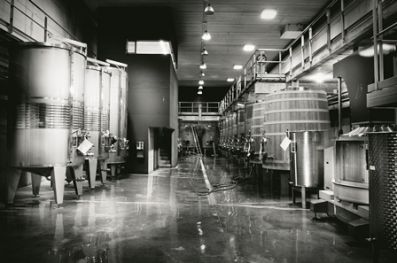 Marc and Emma continued to “make their road by walking” and just one year later, in 2008, they decided to create a new brand which they named Usted. Only 1,500 bottles are made of this, the winery’s most premium range (€150), produced exclusively in excellent years. The wine is crafted from Garnacha and Syrah and undergoes three years’ ageing. Located as they are in such bucolic and environmentally-friendly surroundings, it was only natural that they should bring out a natural wine that they simply called Tan Natural. They set it off along its way in 2012, with very light luggage and of course minimal sulphur. Only 5,600 bottles of this Tempranillo and Garnacha Negra wine are produced.
Marc and Emma continued to “make their road by walking” and just one year later, in 2008, they decided to create a new brand which they named Usted. Only 1,500 bottles are made of this, the winery’s most premium range (€150), produced exclusively in excellent years. The wine is crafted from Garnacha and Syrah and undergoes three years’ ageing. Located as they are in such bucolic and environmentally-friendly surroundings, it was only natural that they should bring out a natural wine that they simply called Tan Natural. They set it off along its way in 2012, with very light luggage and of course minimal sulphur. Only 5,600 bottles of this Tempranillo and Garnacha Negra wine are produced.
The paths of Emma and Marc do not only take them through the Empordà region, but to Latin America as well. Years ago, Emma's father and two friends from Perpignan decided to create a winery in Apalta, in the heart of Chile’s Colchagua valley. They rebuilt a lovely colonial mansion surrounded by vineyards and named it Las Niñas in homage to their daughters. Marc is its president today and he is constantly on flight paths over the ocean to “bear witness” to the efficient running of their Chilean operation. From Perpignan to Chile via the Empordà region. Decidedly, wine knows no borders.


